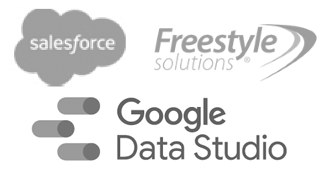Database conversion has been described as more painful than root canal therapy. This is a classic case where it is much better to do the job right the first time than to do it over (and jeopardize business as usual).
Below are approaches to reduce your risk. DMSI provides all of these services, including the award-winning WiseGuys, which offers the ease of desktop database marketing.
Household – This process gathers multiple name and address records into a consolidated group, usually by organization. For DMSI clients, normalization helps sales & marketing pros identify multiple contacts within an organization – highly valued in B-B marketing.
Convert – This one-time process converts name, address, and transaction information from a source database to a target database. Conversion processes are often required when new software is introduced, to transfer legacy data.
Refresh – Taking conversion one step further, Refresh is an application to update a target database on-demand (rather than a one-time conversion). Currently, this process can use either of three alternatives
- An Incremental Refresh – using selective data since the last refresh date;
- A Complete Refresh – using all source data for adds/updates;
- A Rebuild – using all source data for a complete database replacement.
Integrate – This approach creates an integrated database by linking sales & marketing data from multiple client sources, using a powerful application that links multiple files of all types.
Dedupe – This process merges multiple customer files together and then purges duplicates, based on user defined criteria (name & street address, email, etc). The surviving record is most often the preferred one for mailing purposes. However, for building a database, you may choose to keep the most recent customer record, the most complete record, or perhaps the record with order transactions linked to it.
 Professor’s Corner:
Professor’s Corner:
Today’s Forecast – The Difference Between Data & Information
My wife claims that TV weather forecasters must have a strong lobby in Washington: how else can they justify taking 5 minutes of every newscast to tell us stuff no one can understand? It is a good example of the difference between data and information – a key distinction often lost by database marketers.
This is what data looks like: Today, a weak area of low pressure is going to slide by to our south. Tomorrow, cold high pressure will build from the west and northwest. Then, a warm front from a developing storm in the midwest will serve as the dividing line between cold high pressure retreating to the north, and a warm high developing to our south. The warm front is likely to stay south of us during the day, and high clouds should increase late.
This is what information looks like: going to rain – bring an umbrella.
Notice the noise level in the data, versus the “call to action” in the information.
- There are many parallels for “foggy information” in database marketing. Here are three tips to insure you convey meaningful information, not just data:
- Filter your data, to avoid “apples and oranges” comparisons. For example, wholesale and consumer customers existing together in a marketing database will have entirely different buying patterns.
- Less is more. Avoid unending granularity in your marketing reports. Show the trend in the information, not all the “drill-down” data supporting it. Back to the weather analogy: if rain is forecast for the next 3 days, do you really care how much it will rain each hour?
- Make sure your reporting is relevant. To say “my response report shows a peak of 11% of our responses coming from California” may ignore the obvious (e.g. most of your house list resides in California). Consider a penetration analysis instead – a count of responses per 1000 mailings
The absolute master of this topic is Edward Tufte of Yale University. Read his text “The Visual Display of Quantitative Information”, Graphics Press.









